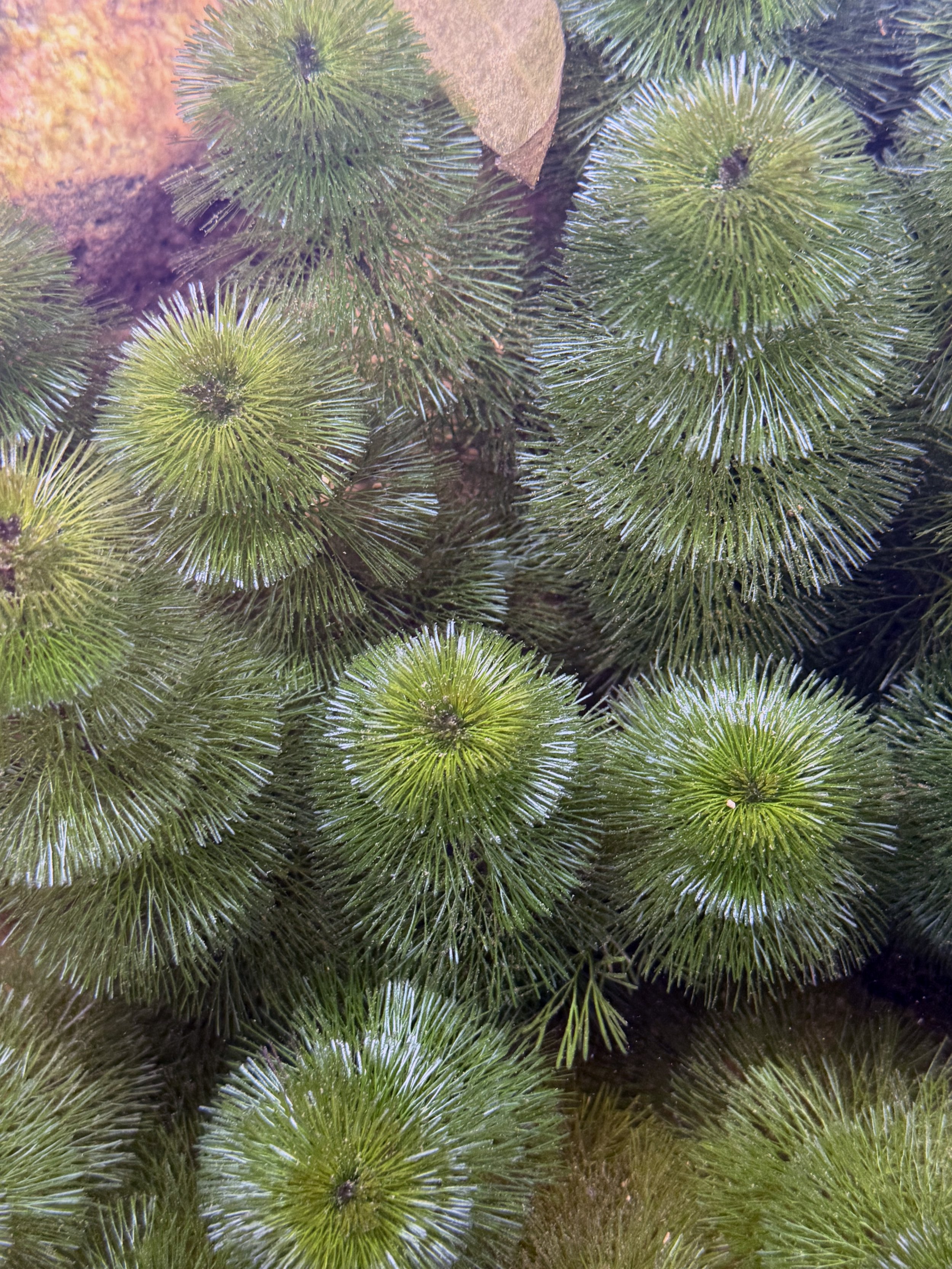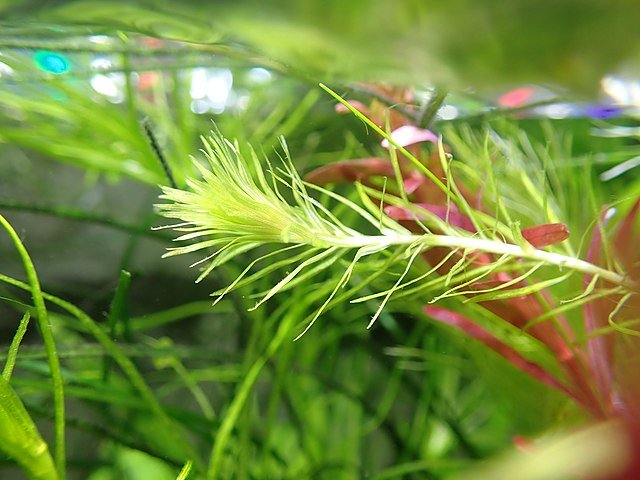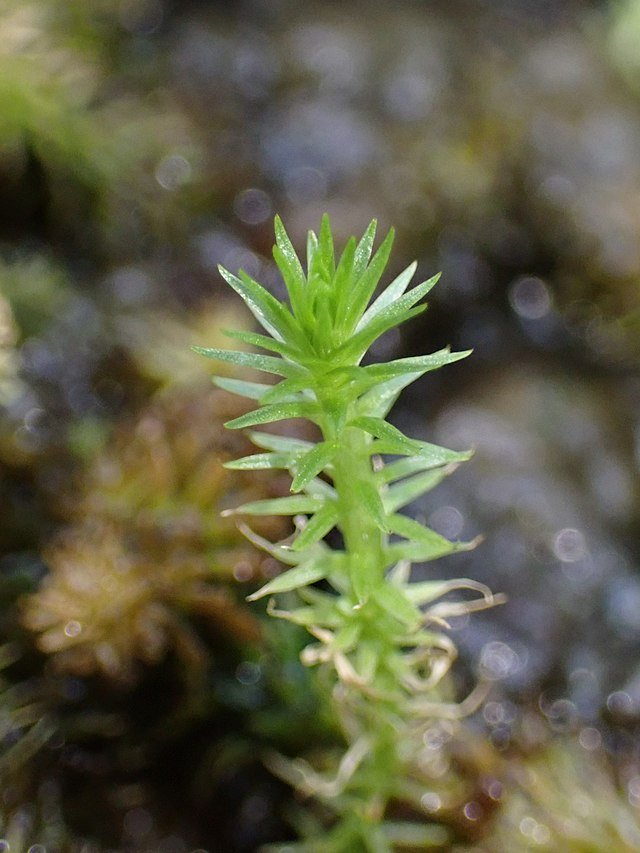 Image 1 of 2
Image 1 of 2

 Image 2 of 2
Image 2 of 2



Pearlweed-Pot
Pearlweed (Hemianthus micranthemoides), also known as Baby Tears, is a delightful and versatile aquatic plant species prized for its small, round leaves and lush, carpeting growth habit in freshwater aquariums. Native to regions of North and Central America, Pearlweed is highly valued by aquarists for its ability to create dense mats and add a touch of natural beauty to aquascapes.
Physically, Pearlweed features tiny, round leaves that grow densely along delicate stems, resembling the appearance of terrestrial mosses. The leaves typically exhibit a vibrant green coloration and form dense carpets or clusters when planted in aquariums. Mature specimens can reach heights of up to 2 to 4 inches (5-10 cm), making them suitable for foreground or midground planting in aquarium setups of various sizes.
In aquariums, Pearlweed thrives in setups with moderate to high lighting and nutrient-rich substrate. It can be planted directly into the substrate or attached to driftwood or rocks, where it will develop a dense network of roots and send out runners to spread across the aquarium floor or surfaces. This plant species is well-suited for both beginner and experienced aquarists, as it tolerates a wide range of water parameters and lighting conditions.
Pearlweed is known for its fast growth rate, making it an excellent choice for aquarists looking to quickly establish lush carpeting or cover surfaces in their aquariums. Regular trimming and pruning help maintain its compact growth habit and prevent it from overtaking other plants in the aquarium.
Water parameters for Pearlweed should be kept within the range of 72-82°F (22-28°C) and a pH level between 6.0 to 7.5. It can adapt to various water conditions, but stable parameters are essential for optimal growth and health.
Overall, Pearlweed is a versatile and visually appealing aquatic plant species that adds natural beauty and texture to freshwater aquariums. Its lush carpeting growth habit and easy-care nature make it a popular choice among aquarists looking to create vibrant underwater landscapes reminiscent of natural aquatic environments.
Pearlweed (Hemianthus micranthemoides), also known as Baby Tears, is a delightful and versatile aquatic plant species prized for its small, round leaves and lush, carpeting growth habit in freshwater aquariums. Native to regions of North and Central America, Pearlweed is highly valued by aquarists for its ability to create dense mats and add a touch of natural beauty to aquascapes.
Physically, Pearlweed features tiny, round leaves that grow densely along delicate stems, resembling the appearance of terrestrial mosses. The leaves typically exhibit a vibrant green coloration and form dense carpets or clusters when planted in aquariums. Mature specimens can reach heights of up to 2 to 4 inches (5-10 cm), making them suitable for foreground or midground planting in aquarium setups of various sizes.
In aquariums, Pearlweed thrives in setups with moderate to high lighting and nutrient-rich substrate. It can be planted directly into the substrate or attached to driftwood or rocks, where it will develop a dense network of roots and send out runners to spread across the aquarium floor or surfaces. This plant species is well-suited for both beginner and experienced aquarists, as it tolerates a wide range of water parameters and lighting conditions.
Pearlweed is known for its fast growth rate, making it an excellent choice for aquarists looking to quickly establish lush carpeting or cover surfaces in their aquariums. Regular trimming and pruning help maintain its compact growth habit and prevent it from overtaking other plants in the aquarium.
Water parameters for Pearlweed should be kept within the range of 72-82°F (22-28°C) and a pH level between 6.0 to 7.5. It can adapt to various water conditions, but stable parameters are essential for optimal growth and health.
Overall, Pearlweed is a versatile and visually appealing aquatic plant species that adds natural beauty and texture to freshwater aquariums. Its lush carpeting growth habit and easy-care nature make it a popular choice among aquarists looking to create vibrant underwater landscapes reminiscent of natural aquatic environments.
Pearlweed (Hemianthus micranthemoides), also known as Baby Tears, is a delightful and versatile aquatic plant species prized for its small, round leaves and lush, carpeting growth habit in freshwater aquariums. Native to regions of North and Central America, Pearlweed is highly valued by aquarists for its ability to create dense mats and add a touch of natural beauty to aquascapes.
Physically, Pearlweed features tiny, round leaves that grow densely along delicate stems, resembling the appearance of terrestrial mosses. The leaves typically exhibit a vibrant green coloration and form dense carpets or clusters when planted in aquariums. Mature specimens can reach heights of up to 2 to 4 inches (5-10 cm), making them suitable for foreground or midground planting in aquarium setups of various sizes.
In aquariums, Pearlweed thrives in setups with moderate to high lighting and nutrient-rich substrate. It can be planted directly into the substrate or attached to driftwood or rocks, where it will develop a dense network of roots and send out runners to spread across the aquarium floor or surfaces. This plant species is well-suited for both beginner and experienced aquarists, as it tolerates a wide range of water parameters and lighting conditions.
Pearlweed is known for its fast growth rate, making it an excellent choice for aquarists looking to quickly establish lush carpeting or cover surfaces in their aquariums. Regular trimming and pruning help maintain its compact growth habit and prevent it from overtaking other plants in the aquarium.
Water parameters for Pearlweed should be kept within the range of 72-82°F (22-28°C) and a pH level between 6.0 to 7.5. It can adapt to various water conditions, but stable parameters are essential for optimal growth and health.
Overall, Pearlweed is a versatile and visually appealing aquatic plant species that adds natural beauty and texture to freshwater aquariums. Its lush carpeting growth habit and easy-care nature make it a popular choice among aquarists looking to create vibrant underwater landscapes reminiscent of natural aquatic environments.






